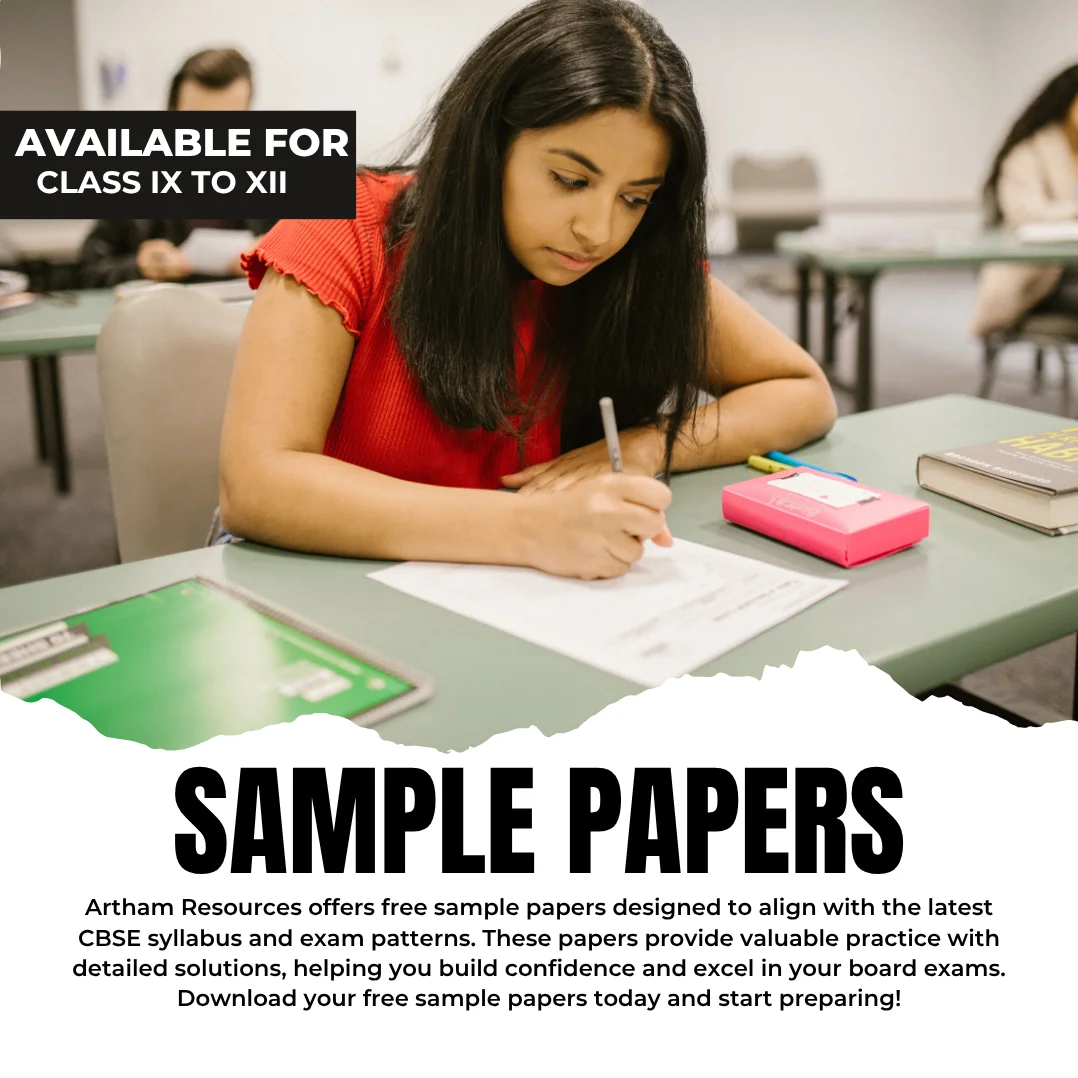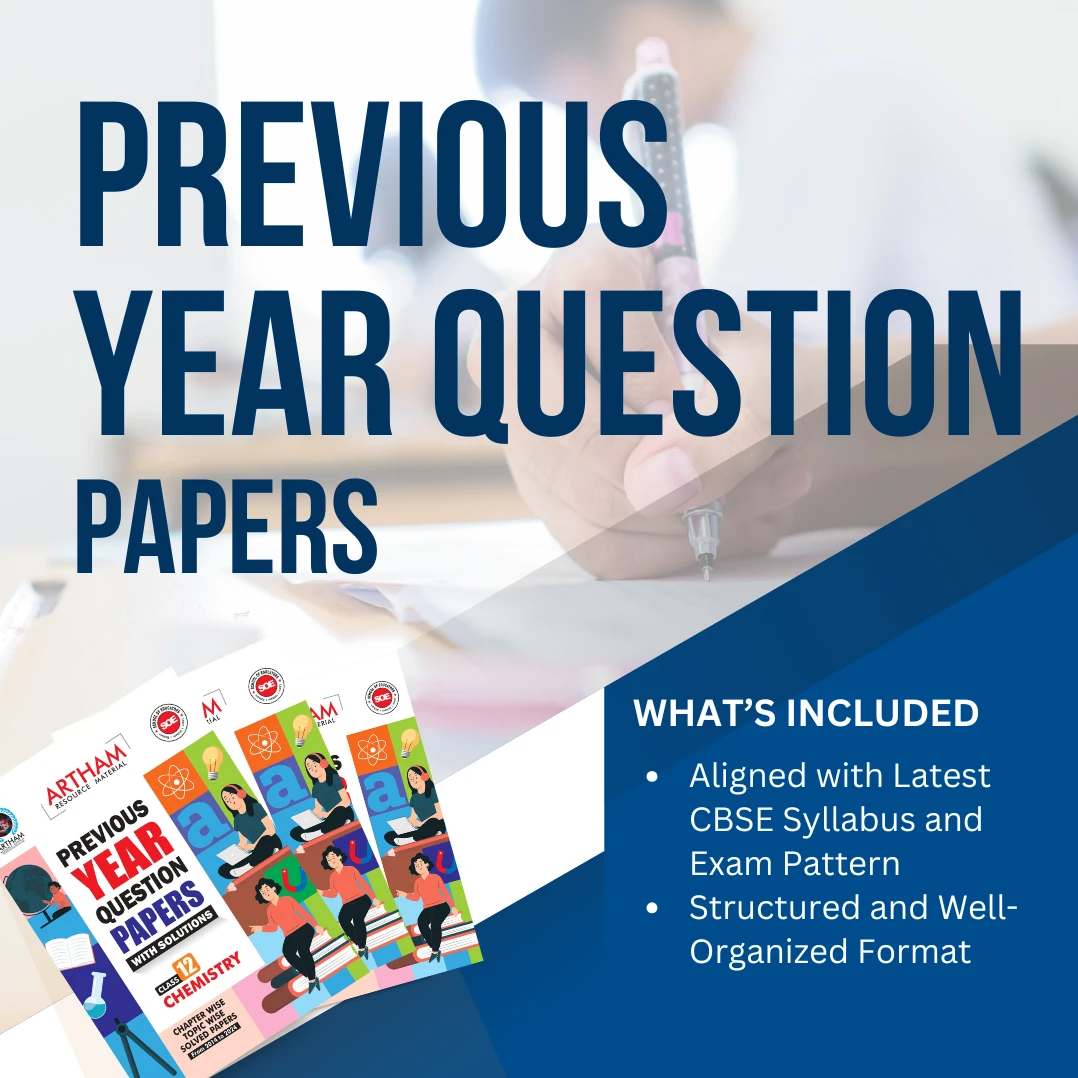Shop Left Sidebar
- CBSE
- Chapter Wise Topic Wise Notes
- Class 10
- Class 9
- Competency-Based Question Bank
- Competitive Exams & Aptitude Tests
- Comprehensive Viva Voice
- Courses
- CUET
- Daily Practice Paper (DPP)
- Diagnostic Assessment
- eBooks
- For New School
- Foundation and Olympiad Study Material
- Gift for Students
- Gift for Teachers
- Half Yearly Sample Question Paper with Solution
- Holiday Homework
- Illustrative Charts
- Journal
- Kindergarten
- Lesson Plan
- Life Skills
- Line by Line Questions
- Mind Maps
- Must Buy
- NCERT Exemplar Solutions
- NCERT Solutions
- Notes
- POWERPOINT PRESENTATIONS
- Pre Launch Stage
- Premium WhatsApp Group
- Previous Year Question Papers
- Previous Year Question Papers with Solutions
- Print version of SOP
- Sample Paper
- Sample Paper with Solutions
- Self Development
- Split -up Syllabus
- Sports and Physical Education
- Standard Operating Manuals
- Study Materials for Students
- Teachers Manual with Lesson Plans
Best seller
-
-100%
₹ 50.00Original price was: ₹ 50.00.₹ 0.00Current price is: ₹ 0.00. -
-100%
₹ 50.00Original price was: ₹ 50.00.₹ 0.00Current price is: ₹ 0.00. -
-100%
₹ 50.00Original price was: ₹ 50.00.₹ 0.00Current price is: ₹ 0.00. -
-100%
₹ 299.00Original price was: ₹ 299.00.₹ 0.00Current price is: ₹ 0.00.
- CBSE
- Chapter Wise Topic Wise Notes
- Class 10
- Class 9
- Competency-Based Question Bank
- Competitive Exams & Aptitude Tests
- Comprehensive Viva Voice
- Courses
- CUET
- Daily Practice Paper (DPP)
- Diagnostic Assessment
- eBooks
- For New School
- Foundation and Olympiad Study Material
- Gift for Students
- Gift for Teachers
- Half Yearly Sample Question Paper with Solution
- Holiday Homework
- Illustrative Charts
- Journal
- Kindergarten
- Lesson Plan
- Life Skills
- Line by Line Questions
- Mind Maps
- Must Buy
- NCERT Exemplar Solutions
- NCERT Solutions
- Notes
- POWERPOINT PRESENTATIONS
- Pre Launch Stage
- Premium WhatsApp Group
- Previous Year Question Papers
- Previous Year Question Papers with Solutions
- Print version of SOP
- Sample Paper
- Sample Paper with Solutions
- Self Development
- Split -up Syllabus
- Sports and Physical Education
- Standard Operating Manuals
- Study Materials for Students
- Teachers Manual with Lesson Plans
Showing all 11 results
-
-62%
Lesson Plan Class 7 Science Chapter 9 Electricity And Circuits
₹ 50.00Original price was: ₹ 50.00.₹ 19.00Current price is: ₹ 19.00.The lesson plan for Class 7 Science Chapter 9, “Electricity and Circuits,” introduces students to the fundamental concepts of electricity and electrical circuits. The lesson covers the basics of electric current, the structure and function of a simple circuit, and the role of various components such as cells, bulbs, switches, and wires. Through engaging activities and hands-on experiments, students will learn to construct and analyze different types of circuits, understand the flow of electricity, and identify conductors and insulators.
-
-62%
Lesson Plan Class 7 Science Chapter 10 Fun with Magnets
₹ 50.00Original price was: ₹ 50.00.₹ 19.00Current price is: ₹ 19.00.The lesson plan for Class 7 Science Chapter 10, “Fun with Magnets,” aims to introduce students to the fascinating world of magnetism. This chapter explores the properties and uses of magnets through engaging activities and experiments. Students will learn about magnetic and non-magnetic materials, the poles of a magnet, and the concept of magnetic fields.
-
-62%
Lesson Plan Class 7 Science Chapter 11 Air Around Us
₹ 50.00Original price was: ₹ 50.00.₹ 19.00Current price is: ₹ 19.00.This lesson plan for Class 7 Science, Chapter 11, “Air Around Us,” provides a comprehensive approach to understanding the composition and significance of air. The plan includes interactive activities, experiments, and discussions to explore the various components of air, such as nitrogen, oxygen, carbon dioxide, and water vapor. It emphasizes the role of air in supporting life, the water cycle, and weather patterns.
-
-62%
Lesson Plan Class 7 Science Chapter 8 Light, Shadows And Reflections
₹ 50.00Original price was: ₹ 50.00.₹ 19.00Current price is: ₹ 19.00.The lesson plan for Class 7 Science Chapter 8, “Light, Shadows, and Reflections,” is designed to provide students with a comprehensive understanding of the fundamental concepts of light and its interactions with objects. This chapter explores how light travels, the formation of shadows, and the principles behind reflection. Through engaging activities and experiments, students will learn about transparent, translucent, and opaque materials, and how they affect light transmission.
-
-62%
Lesson Plan Class 7 Science Chapter 7 Motion And Measurement of Distances
₹ 50.00Original price was: ₹ 50.00.₹ 19.00Current price is: ₹ 19.00.This lesson plan for Class 7 Science, Chapter 7, “Motion and Measurement of Distances,” aims to provide students with a comprehensive understanding of the fundamental concepts of motion and various methods of measuring distances. The lesson starts with a brief introduction to motion, explaining different types of motion such as linear, circular, and periodic. It then transitions into discussing historical methods of measuring distances, such as using body parts and later advancements like the development of standardized units.
-
-62%
Lesson Plan Class 7 Science Chapter 6 The Living Organisms - Characteristics And Habitats
₹ 50.00Original price was: ₹ 50.00.₹ 19.00Current price is: ₹ 19.00.Explore the intricate world of living organisms through this comprehensive lesson plan for Class 7 Science. Focusing on Chapter 6, students will delve into the diverse characteristics that define living beings and their unique habitats. The lesson plan integrates hands-on activities to illustrate key concepts such as adaptation, classification, and interaction within ecosystems. By studying various habitats like terrestrial, aquatic, and aerial, students gain a deeper understanding of how organisms adapt to their surroundings.
-
-62%
Lesson Plan Class 7 Science Chapter 5 Body Movements
₹ 50.00Original price was: ₹ 50.00.₹ 19.00Current price is: ₹ 19.00.This lesson plan for Class 7 Science focuses on Chapter 5: Body Movements, aiming to engage students through interactive activities and discussions. The plan includes a brief introduction to the skeletal system and its role in movement, followed by demonstrations of different types of body movements like flexion, extension, and rotation. Practical exercises, such as observing joint movements and their flexibility, are integrated to enhance understanding.
-
-62%
Lesson Plan Class 7 Science Chapter 4 Getting To Know Plants
₹ 50.00Original price was: ₹ 50.00.₹ 19.00Current price is: ₹ 19.00.This lesson plan for Class 7 Science, Chapter 4 focuses on “Getting To Know Plants.” Students will explore the diverse world of plants, learning about their structure, types, and functions. The plan includes activities to identify different parts of plants, understand their adaptations to various environments, and appreciate their role in the ecosystem.
-
-62%
Lesson Plan Class 7 Science Chapter 3 Separation of Substances
₹ 50.00Original price was: ₹ 50.00.₹ 19.00Current price is: ₹ 19.00.In this lesson plan for Class 7 Science, Chapter 3 focuses on the ‘Separation of Substances’. Students will explore various methods such as filtration, evaporation, distillation, and magnetic separation to separate different types of mixtures and substances. The lesson begins with an engaging introduction to the concept of mixtures and the need for separation in daily life scenarios. Through interactive activities and demonstrations, students will understand the principles behind each separation technique and their applications.
-
-62%
Lesson Plan Class 7 Science Chapter 2 Sorting Materials Into Groups
₹ 50.00Original price was: ₹ 50.00.₹ 19.00Current price is: ₹ 19.00.This lesson plan for Class 7 Science, Chapter 2, focuses on ‘Sorting Materials Into Groups’. Students will explore the diverse world of materials, understanding their properties and how they can be categorized based on various criteria such as appearance, texture, and uses. Through hands-on activities and interactive discussions, students will learn the importance of classification in scientific study and everyday life.
-
-62%
Lesson Plan Class 7 Science Chapter 1 Components of Food
₹ 50.00Original price was: ₹ 50.00.₹ 19.00Current price is: ₹ 19.00.This lesson plan for Class 7 Science focuses on Chapter 1, “Components of Food,” aiming to introduce students to the essential nutrients necessary for human health. The plan includes interactive activities to explore the five major food components: carbohydrates, proteins, fats, vitamins, and minerals.
Teaching is one of the hardest and most important jobs in the world. We provide the support that teachers need to transform their subjects into terms that their students will understand.
- Nageen International
- B-162, 4th Floor, DDA Shed, Okhla Industrial Area Phase 1 New Delhi-110020 (India)
- WhatsApp us at +91-95208-11111
- Email: info@educatorsresource.in
- (Monday to Saturday) WhatsApp 24*7
2025 Educator Resources. All Rights Reserved.




